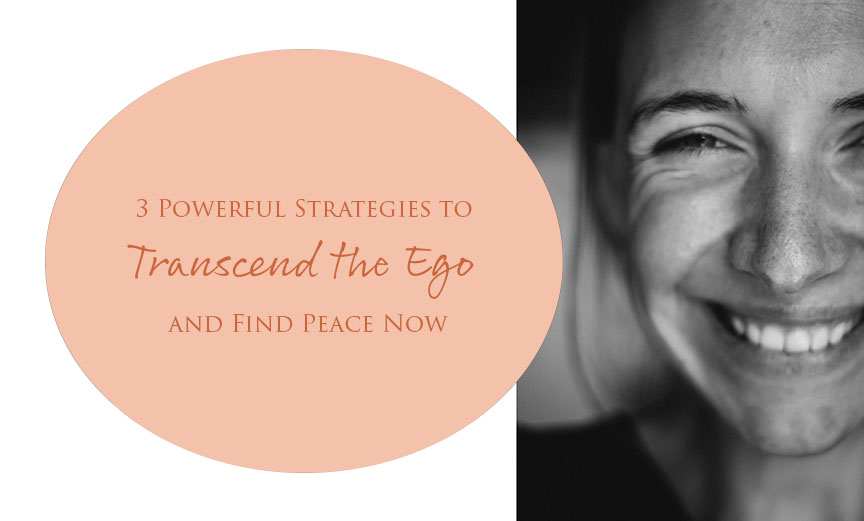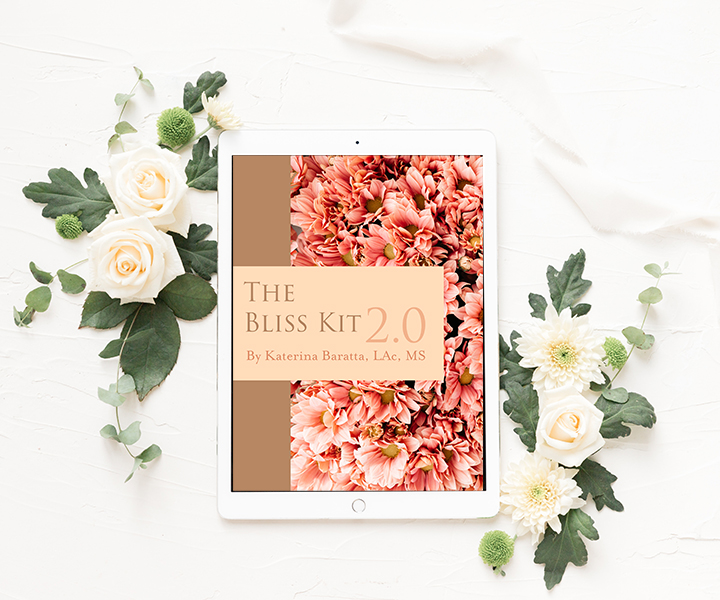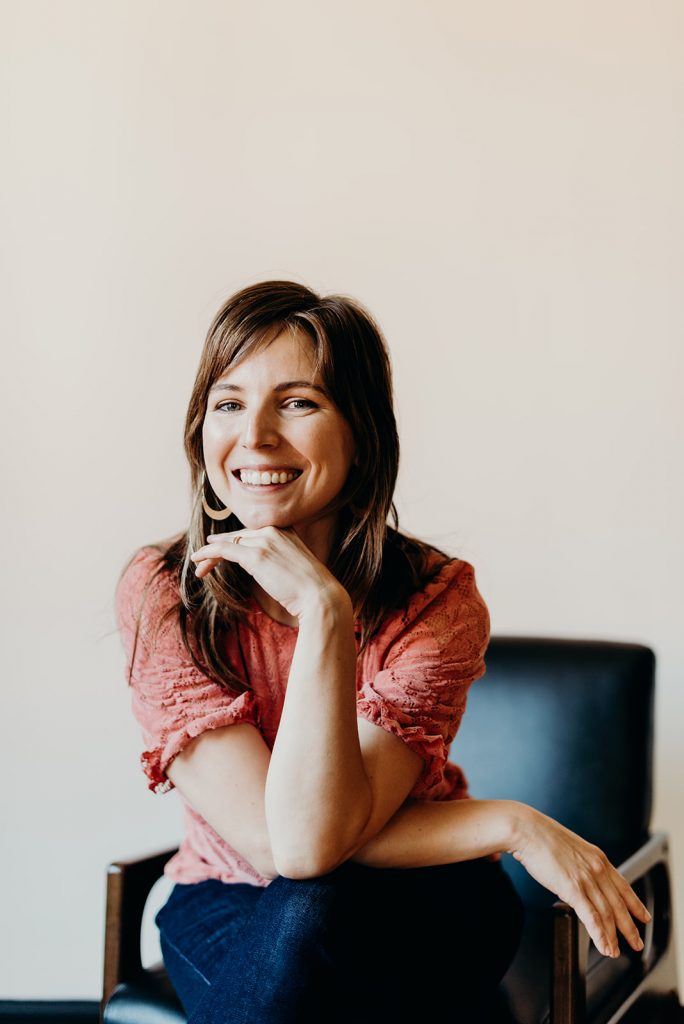Whether they say it explicitly or not, most spiritual traditions around the world teach that the ultimate goal in life is to transcend the ego.
But there’s a lot of misunderstanding around what this means.
And this misunderstanding can lead to suffering instead of the peace you’re hoping to find when you engage with these teachings.
This article is going to clarify 4 things:
- What the ego is
- Why you might want to transcend it
- What transcendence really means
- And then I’ll walk you through 3 powerful strategies that can help you transcend the ego and find peace, right now.
What’s really interesting about these strategies is that they seem to work from opposite angles.
One helps you poke holes through the beliefs that are holding you back, the other has you immerse yourself in them so they dissolve from the inside out.
But whichever path you choose to follow, they lead you to the exact same place.
Still, before you pack your bags and head out on this transcendent journey, let’s get clear on what we’re talking about, shall we?
After all, you need to understand a map before you can use it.
what is the ego?
To understand the ego, we’ll start with what seems like an obvious question:
“Who do you think you are?”
Before you skip ahead, take a moment to really think about your answer.
You might even want to grab a piece of paper and jot down a few ideas.
Got ’em?
What did you come up with?
Probably your name.
Where you’re from.
Your occupation and hobbies.
Maybe your role in relation to others.
You also could’ve thrown in a few personality quirks, a description of your appearance, your famous apple pie recipe.
The truth is, it doesn’t matter what you wrote.
Because however it is you choose to answer that question, it’s the ego talking.
The ego is, by definition, who you think you are.
It’s the sum total of all of the thoughts you have about yourself.
And that means it’s all in your imagination.
It’s not real.
Or at least, it’s not the whole Truth.
So then who are you, if not what the ego tells you?
Now there’s the real question!
Who are you when you strip yourself of all your labels, let go of your past, stop thinking about the future?
What happens when you release your judgments, and free yourself from the desires and aversions you learned over the course of your life?
Who are you beyond your identity?!
Who is the thinker of these thoughts?
Who is the witness?
Who is the one behind the labels and stories?
The answer to these questions brings you one step closer to realizing peace.
And it’s the answer to these questions that this article is trying to guide you toward.
This is really tricky business, because all thought comes from ego.
In fact, ego is pretty much synonymous with thought.
Thought is the conceptualization of the world and the self as separate entities.
Transcending the ego means accessing the space that’s beyond the ego, that’s beyond thought, that’s beyond personal identification.
Why would you want to do that?
Because transcending the ego is how you access the capital “T” Truth.
And it’s the Truth that will set you free.
It’s the only thing that can.
Not convinced?
Then let’s get straight to a point even the ego can appreciate:
A life led by the ego is stressful as f*%$.
Because the ego developed as a means to promote the survival of the physical body.
But no matter how many green smoothies you drink, no matter how many hours you spend at the gym, eventually your body will die.
So the ego has an impossible job.
But it’s not the only option.
Because the very fact that you think you are your body is another product of ego.
Stay with me here.
The Truth is that you’re using your body in order to have this experience in the physical plane.
But you are not your body.
You are what gives your body life.
And the ego’s goal of promoting the survival of this body, of trying to ensure the continuity of who you think you are, is causing a lot more stress than you either want or need.
This is the root of every uncomfortable thought that you’ve ever had.
But thoughts are incomplete.
They’re faulty, and deceiving.
You think they’re telling you the truth, but they can never tell you the Whole Truth.
Because thoughts are just a regurgitation of the past.
Every thought you have is shaped entirely from the imprints you carry in your nervous system from past experiences.
Your ego uses these thoughts to try to steer your behavior in a predictable way in the hopes of getting predictable results.
(And the predicable result the ego is ultimately hoping for, above all else, is survival.)
Things that feel safe and good tend to feel that way because that’s what the ego knows.
In your past, those were the thoughts and behaviors that promoted the survival of your body and reinforced the image you have of yourself.
Things that feel scary or uncomfortable also feel that way because of the memories your nervous system carries from the past.
Those were the experiences that threatened the survival of your body and had the power to change the image you have of yourself, which consequently threatened the ego.
But change is the only constant in life.
Life is flow and change.
And every moment is entirely fresh and new and unique.
But to experience the beauty in it, you have to be able to see beyond the ego’s clinging.
Because the ego wants things to be as predictable as possible.
So when you live life without awareness of how the ego works, your experience is in large part limited to what you’ve already lived.
You find yourself replaying the same reactions you’ve had, over and over and over again because they are familiar, more predictable, and therefore feel safe (even if they don’t actually serve you.)
This is trauma, it’s why you get stuck, and it’s stressful.
The ego is by its nature very, very stressful.
Because the ego is always fighting against the Truth.
And any time you fight against the Truth, you lose.
It’s this constant denial of Truth that causes suffering.
“Stress is wanting something to be the way it isn’t.”
The ego wants the body to survive, which it can’t.
It wants to feel like it’s in control, which it isn’t.
And if the ego had its way, nothing would ever budge.
Because the ego imagines that if only it could see all the pieces, if only it could keep everything picture perfect, then, and only then, will life finally feel the way it “should.”
Then, and only then, will you find what you’ve been looking for.
But that’s like trying to mold slime into a sculpture.
It won’t stay put.
Because life keeps flowing and changing.
So basically, the ego wants life to be more like death, meanwhile death is the exact thing the ego fears the most.
It doesn’t make any sense!
Do you see how insane this is?!
But logic isn’t helpful when you’re seeing life through the eyes of the ego.
Because the ego is in survival mode.
And the neurological stress response that happens when you’re in survival mode actually shuts down the rational parts of your brain.
The only way to relieve stress and suffering is by transcending the ego.
Transcendence is the space beyond worry, regret, and anxiety.
And it’s the Truth of who you really Are, not who you think you are.
So now you want to transcend the ego, but how do you do it?
You actually do it all the time, without even trying.
Because you are always here.
The body grows and changes, and you remain constant within it.
Hopes and fears evolve, and you are still the one holding them.
Roles shift within society—first you’re a baby, then a child, then a teenager, then a young adult, up into middle age and finally the golden years—and yet through all of this metamorphosis, it’s all still the same, constant you.
Your mind might be shooting thoughts at you faster than a tennis ball launcher, pulling your attention in 100 different directions at once, and still you’re the sturdy presence receiving it all.
When you realize this, when you realize that there is a part of you that is constant and ever-present, beyond the ego, then you realize that the ego really isn’t something you have to get rid of.
And this is the heavy misunderstanding so many people carry with them when they embark on this journey of transcendence.
They hear that the ego causes suffering, so they try every trick in the book to scrub themselves clean of it, imagining that they can’t find peace or Truth with it tagging along.
But the ego isn’t good or bad.
It serves a purpose.
Without it you wouldn’t be able to have this experience.
Suffering only arises when you identify with the ego.
When you imagine that you are your body and that your thoughts are reality.
The Whole Truth has space for all of it, the ego and the witness beyond the ego.
Peace doesn’t come from being at war with the ego.
It is in recognizing the Truth that holds the ego and everything else.
So how do you transcend the ego and find peace now?
There are 3 strategies that I’ve found extremely helpful, both for myself and the people I work with.
The first is presence, the second is self inquiry, and the third is acceptance.
Here’s how they work.
“Happiness lies not in finding what is missing, but in finding what is present.”
Transcend the Ego Through Presence
Presence is more popularly called mindfulness, but that’s a misnomer.
A better name would be mindlessness.
Because when you are fully present, you are witnessing your life from the perspective of the Witness instead of letting the thoughts in your mind dictate your experience.
This is what meditation practices train you to do.
To watch thoughts and experiences pass through you like clouds in the sky, without clinging to any of them.
One way to do this is to just feel into the sense of aliveness that you have in your body, maybe focusing on your hands, or even just the tip of your right thumb.
Another way to do this is to come into awareness of your other senses.
What do you see in front of you, right now?
Without interpreting any of it, what is the experience of sound in this moment?
Can you observe smells or tastes without labeling them?
Ultimately, where you focus your attention doesn’t matter, be it your breath, a mantra, a candle, a spot on your body, or anything else.
What does matter is that you are quieting your thoughts.
That you’re allowing yourself to tune into the part of you that’s watching it all happen, right here, right now, instead of getting caught up in the story-line your mind is telling you.
And your mind WILL jump in and try to tell you all sorts of stories.
Especially at first.
It will want to analyze and explain everything.
Just notice this, when you can, without judging yourself for it.
And then shift your focus back to the experience in this moment, free of interpretation.
(If you want to learn more about presence, Eckhart Tolle, Thich Nhat Hanh, and Jon Kabat-Zinn are some of my favorite teachers.)
Transcend the Ego Through Self-Inquiry
Self-inquiry is another powerful strategy to help you transcend the ego.
We already dove into this a bit at the beginning of this article when I asked you all of those questions about who you are.
And ultimately that’s what self inquiry shows you: the Truth of who you are.
Eastern masters like Ramana Maharshi and Sri Nisargadatta Maharaj came to full realization (aka enlightenment) by focusing their attention entirely on the question “Who am I?”
And this simple question is enough for some people to transcend the ego so completely that their awareness is forever altered.
But for most of us the journey is filled with more rest-stops.
We get so distracted by our agendas and to-do lists and missteps along the way that we need to make a point of stopping regularly to remember that the destination is the very place in which the journey arises.
And on a practical level, this means observing our thoughts and questioning them.
Especially the thoughts that make us cringe.
Because it’s in questioning them that we invalidate them and come closer to the Truth.
By looking directly at your thoughts and associated emotions you start to see how they’re making you suffer.
It’s through this process of inquiry that you come to realize —not just know on an intellectual level, but truly realize— for yourself, that your thoughts can never tell the whole Truth.
You start to see more clearly how your thoughts are limiting you, and you open yourself up to finding alternatives that are just as true but might serve you better.
This frees you to embrace life as you’re living it instead of the ego dictating your experience.
And it brings you more fully into presence.
Byron Katie teaches a brilliant method for doing this that she calls “The Work,” and you can find all of her resources for free on her website.
The Sedona Method is another powerful example of self-inquiry, and it also integrates the next ego transcending strategy: acceptance.
Transcend the Ego Through Acceptance
Acceptance is the most counterintuitive of these strategies.
And be forewarned.
When you first hear about it, it sounds like the worst thing ever.
The ego WILL rebel.
Loudly.
Which, if you’re serious about this whole ego transcendence schtick, might actually make you see this as the brightest road sign on this journey.
Because when you practice acceptance, the ego has nowhere left to go.
And the louder the ego protests, the more stories it tries to tell you, the more you know its being threatened.
Acceptance is the fast-track to transcendence.
But before we get into the details of this, let’s clear up another major misunderstanding.
Acceptance isn’t the same thing as denial or inaction.
It simply about meeting the Truth.
If you are in denial about something you are imagining things to be as they are not, and this causes stress and suffering.
Fighting against the Truth is just as painful.
It just creates more war.
Accepting the Truth of a situation allows you to take more effective action and create a bigger impact than fighting ever can.
And this goes for the relationship you have with yourself just as much as the relationship you have with the world outside of yourself.
Because when you fight against any part of life’s experience, including uncomfortable emotions like grief, fear, uncertainty, you’re perpetuating conflict within yourself and therefore the world.
You have to find peace within yourself before you can promote peace in the world.
And this is what acceptance enables you to do.
“I was once asked why I don’t participate in anti-war demonstrations. I said that I will never do that, but as soon as you have a pro-peace rally, I’ll be there.”
“Without giving up hope—that there’s somewhere better to be, that there’s someone better to be—we will never relax with where we are or who we are.“
Counterintuitively, it is by losing hope that we find peace.
Gangaji is a teacher who transmits this truth brilliantly.
Let’s say the thing your ego is hooked on right now is a fear of failure.
When you practice acceptance, instead of alternating between frantic hustle and torturous self-doubt, you let yourself be fully in the space you fear most.
You can use self-inquiry to do this.
What happens, if just for this moment, right now, you let yourself be the miserable failure you’re so afraid of being?
How would you feel if you just totally gave up hope?
What do you find in that space beyond all of your striving and trying?
In my experience, you find relief.
You find security.
You find peace.
But don’t take it from me.
Try these strategies out for yourself and see what happens.
And if you’d like more support and direct guidance to help you relieve stress and anxiety naturally, email me now so we can set up a free consultation.
My online programs and 1-on-1 work are designed to help you find more peace, joy, and confidence in your everyday life.
And if you’re ready to stop the war within yourself, I’d be honored to walk beside you.
I can’t wait to see where this takes you!





